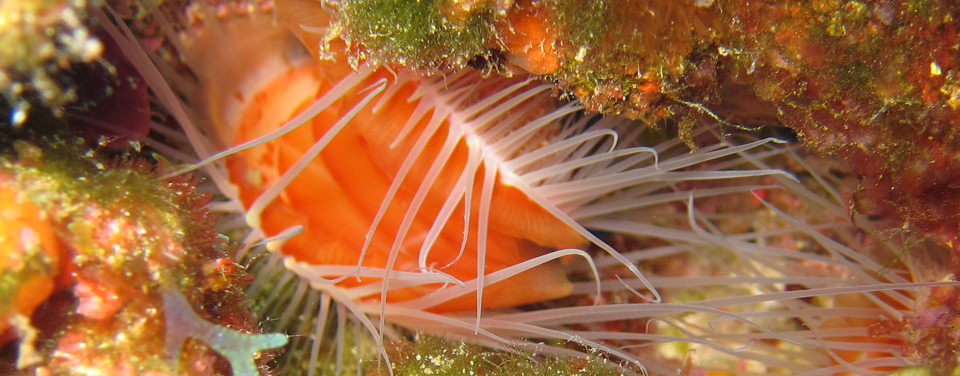What is a bivalve mollusk?
Bivalve mollusks (e.g., clams, oysters, mussels, scallops) have an external covering that is a two-part hinged shell that contains a soft-bodied invertebrate.

A roughfile clam from the Flower Garden Bank National Marine Sanctuary—just one of many different bivalve mollusk species.
Like fish, bivalve mollusks breathe through their gills. As filter feeders, bivalves gather food through their gills. Some bivalves have a pointed, retractable "foot" that protrudes from the shell and digs into the surrounding sediment, effectively enabling the creature to move or burrow.
Bivalves even make their own shells. An internal organ called the mantle secretes calcium carbonate so that as the inner invertebrate grows, the outer shell provides a roomier home.
Many bivalve species play important roles in aquatic and marine ecosystems by filtering the water and serving as habitat and prey for a variety of sea life. This diverse group of species, estimated at about 9,200, inhabits virtually the entire world ocean, from the balmy tropics to the sub-zero Arctic, and from the deep ocean to sandy and rocky shorelines. A few have even taken up residence around hydrothermal vents found deep in the Pacific Ocean, below 13,000 feet.
If the bivalve's biological brilliance alone fails to impress, then consider that NOAA estimated the 2011 economic value of commercial bivalve mollusk harvesting at about $1 billion annually in the U.S., and the weight of the harvest was estimated at 153.6 million pounds.
Search Our Facts
Get Social
More Information
Last updated: 06/16/24
Author: NOAA
How to cite this article